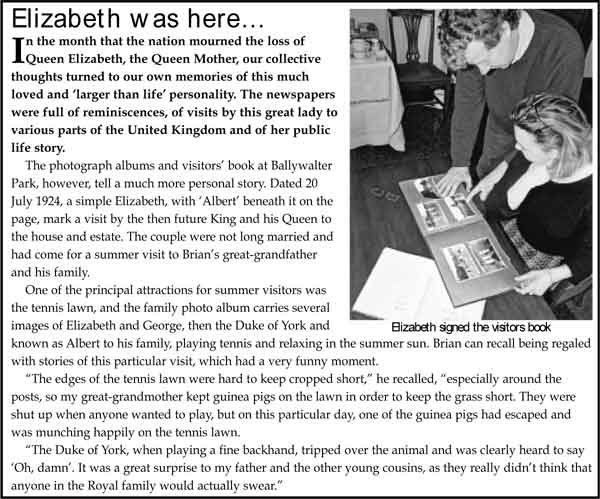
 |
||||
| marketing in Great Britain for Irish Distillers and oversaw such marketing successes as the launch of Bushmills Malt on the GB market in 1984. When Brian returned to live in Northern Ireland in 1991, he lived at Belle Isle Estate in County Fermanagh, where he acted as the estate manager for the Duke of Abercorn. It was Brian who was responsible for the first phase of the restoration of the house there and the development of tourism accommodation, which has proven to be so successful for that estate. When he came to live in Ballywalter in 1997, therefore, Brian Dunleath (as he became known when he inherited his title) had already established a solid set of credentials for the work in hand on his own estate. |
Preserving the past That Ballywalter House represents a past worth preserving is unquestionable. Readers of Country Sports and Country Life, of course, do not need to be persuaded of that fact. In case there is a doubting Thomas in our midst, however, let us state clearly from the first that, quite apart from all the 'bygone age' and 'sporting heritage' arguments, Ballywalter House is of exceptional architectural importance. The house has been described as "... a classic example of an early Victorian country house" and of a type of architecture that was particularly popular at that time, the palazzo style. In the 1840's, when the current house was built on the estate, the palazzo style was the modernist approach to architecture, reflecting the rise of |
industrial wealth and deriving from the architecture originally developed to serve the mercantile princes of 15th and 16th century Italy. Classical yet distinct Among the great houses of Ulster, the architecture of Ballywalter exhibits certain formal differences from the style of its predecessors. Its facades are classical yet distinct. Ballywalter has no great portico, with columns that scale the front, no central pediment, and its architecture is formed in the modern 19th century materials of stucco and composition cement. Two projecting wings mark the entrance front, with large tripartite windows framed by rich Corinthian columns and pediments above. Its centre is distinguished by a Doric |
||
|
Countrysports
and Country Life Summer 2002
|
|
| << Previous | |